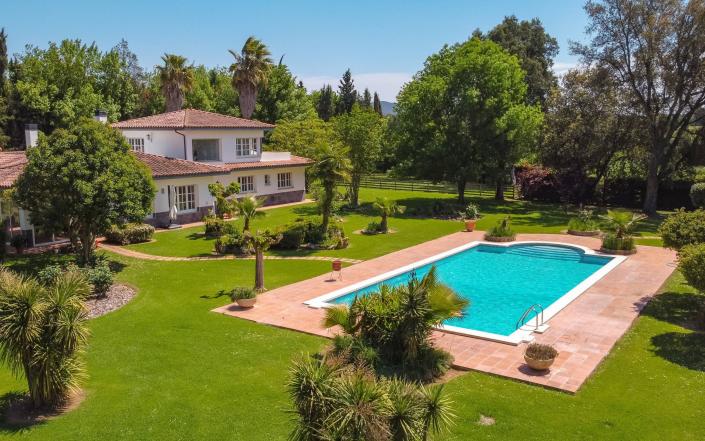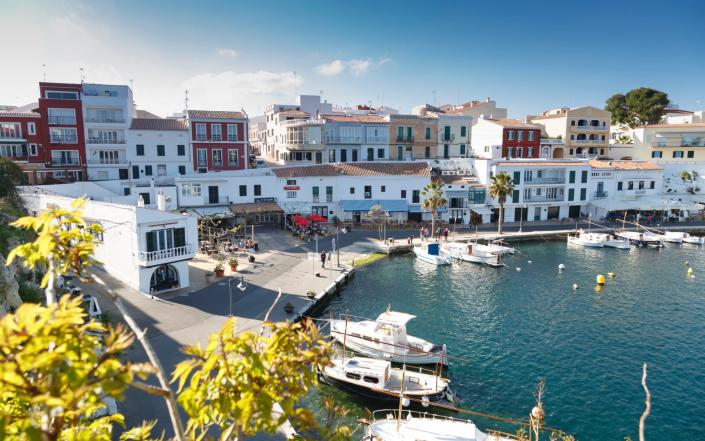
The obstacles of Brexit and then Covid have not stopped the British buying homes in Spain. Affordable property, seemingly endless days of guaranteed sunshine and lower living costs seem more important to buyers than ever.
For three months at the end of last year, Britons lost their long-held position as the most prolific group of foreign buyers – to Germans – but they are now back on top. According to the Spanish land registry, in the first quarter of 2022, British people bought the most number of properties since 2018.
This trend is likely to continue. Rightmove, the property website, reported that the number of buyers enquiring about Spanish properties is up 36pc on the same period last year.
Three areas in Andalusia were the most in demand: Islantilla on the Costa de la Luz, to the west of Gibraltar, Marbella, and the coastal resort of Vera in Almeria.
Marc Pritchard, of developer Taylor Wimpey Espana, said: “We are selling new properties too quickly [to build them], despite having to put up prices due to steep increases in the price of building materials.”


Nearly half of the current home hunters are looking to move to Spain full-time – a process that has required a visa since January 2021. “Golden visas” are available to those spending €500,000 (£433,643) on a property, and these have made up around a tenth of British applications according to My Lawyer in Spain. Most of those buyers have headed to Mallorca.
The rest of their applications are for the Non-Lucrative Visa, which is designed for those not working in Spain – mainly retirees; they mostly move to either the Costa Blanca or the Costa del Sol.
Mark McMillan, of Sun Lawyers on the Costa Blanca, said: “We are currently dealing with over 100 NLV applications for British people, as well as applications for EU passport holders and their UK spouses to move to Spain. Demand for NLV applications has been high since early 2021.”
The NLV requires proof of financial self-sufficiency – a couple must show an income of around €2,500 (£2,140) a month, and for a single person it is €2,316. While this threshold has now ruled out a move to Spain for those living on little more than their state pension, others have been navigating the application process, with some renewing their visas after the first year.


Debbie Scott has just renewed her NLV after moving from Cardiff to the Costa del Sol with her husband John in March 2021. She said: “The process is not as costly nor as complicated as the first time – it took only 18 days, not four months, as it did originally – and cost us less as we didn’t need to supply the medical certificate nor the police check.”
It’s a good idea to get some help from a visa expert; even if you are fluent in Spanish, the paperwork is intimidating. But the good news from these experts is that there are some small, simple ways to save time and money when trying to make the leap and move to Spain.
Pensioners can now save on expensive private healthcare
Access to healthcare after Brexit is a major concern for British retirees hoping for a new life in Europe. Visas require that applicants take out private healthcare, which is typically €800 to €1,500 a year for a person aged 50 to 65.
However, British people in receipt of a UK state pension are now entitled to access Spanish state healthcare, via an S1 certificate of entitlement obtained from the Overseas Health Service in the UK. If only one of a married couple is in receipt of a state pension, the other can use their spouse’s S1 to access healthcare, too.
For Jude Baker, 64, and Ed, 75, two retirees who moved to Lanzarote from Cornwall last year, this is a big cost saving. Mr Baker said: “When we applied for our NLV last year we had to take out a year’s private healthcare cover which cost us €3,500. Thankfully we won’t need to renew the policy.”
Piggyback on an EU spouse
There are around 318,000 couples in the UK with one half from the EU, according to the Office for National Statistics, and if you are one of them it will be easier to move to Spain.
Instead of applying for a visa, British passport holders can piggyback on their wife or husband’s EU passport holder application for Spanish residency – and also carry on working.
This was the case for Simon Constant, from Northern Ireland, whose wife Julie has an Irish passport. Mr Constant, who is a 50-year-old pilot, said: “At the beginning of the year, people in Spain were telling me Brexit was Brexit and I wouldn’t be able to work there, but with legal advice I managed it. The residency applications cost €500 for Julie and €700 for me, plus our private health insurance.”


Save on medical certificate costs
The medical certificate required for visa applications, which states you don’t have certain infectious diseases, typically costs around £150 to obtain from a UK private healthcare firm. You must also pay £54 to have it notarised, plus £60 to £90 for translation into Spanish.
But there is a cheaper way, said Mr McMillan. “Getting one in Spain via a private clinic costs around €60 (£51) in total, saving applicants up to £250 each.” Because the document is in Spanish, it does not need translating, but you do have to be travelling to Spain at the right time to obtain it, and beware that it will expire after three months.
Get your paperwork right first time
Spanish paperwork is bamboozling even to seasoned expats, who usually rely on paying for a gestoria [state administrator] to do tax returns and other necessities of residency.
Applications are turned down if you don’t meet the eligibility criteria or don’t have the right documents translated and notarised properly. With the average cost of an application €1,600 for a married couple, according to My Lawyer in Spain, having to start from scratch again will be an expensive mistake, never mind delaying your move by a couple of months.
Proving you have stopped working has been an issue for a few applicants, said Melanie Radford of My Lawyer in Spain. “You need a P45, or letter from your former employer, or proof you have notified HMRC you have ceased trading if you are self-employed.”


Think about other sources of income
When you apply, you will need to show proof that your savings and income meet the minimum threshold by providing bank statements. If your pension income or savings doesn’t seem enough, think laterally: you can include proof of rental income from a UK property (especially long-term buy-to-lets), bonds, and pension lump sums that you are eligible to draw down imminently.
Save tax by timing it right
Once you move to Spain you will become tax resident there and so will need to pay tax on your worldwide assets, which includes any properties you own in the UK. Jason Porter, of Blevins Franks Financial Management, said: “Be aware that if you leave the sale of your UK home until after you leave, then you must disclose this in your new country. You may have to pay capital gains tax on it in the UK and in your new location.”
It’s important to remember that wrappers such as Isas are not tax efficient elsewhere. Consider cashing these in before you leave the UK – although think carefully whether you might need it if you were to return to the UK. The Spanish tax year runs from January to December, so get advice on when to plan your move to help you make tax savings.
“In the UK the tax year is split into two halves but in Spain it’s not, so you might end up paying more (or less) by moving in July compared to November, for example,” said Mr Porter.




